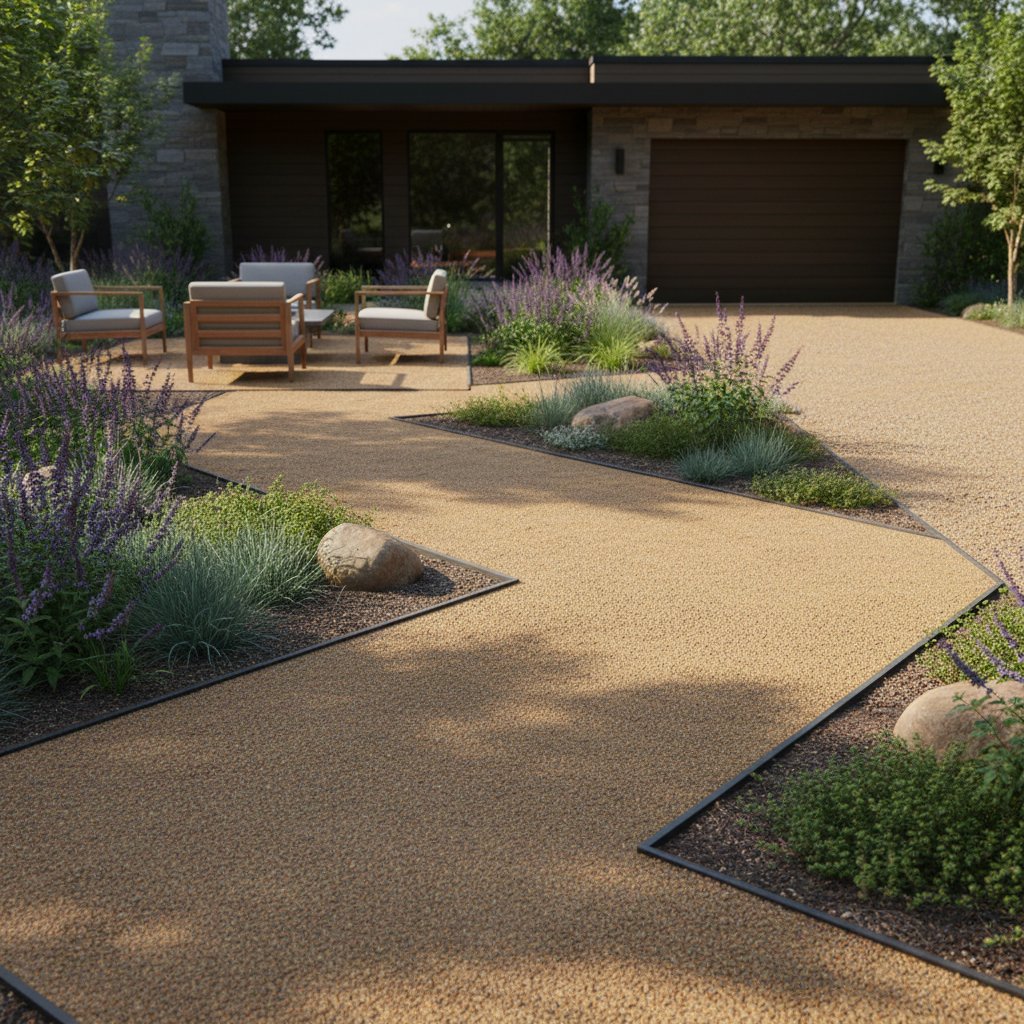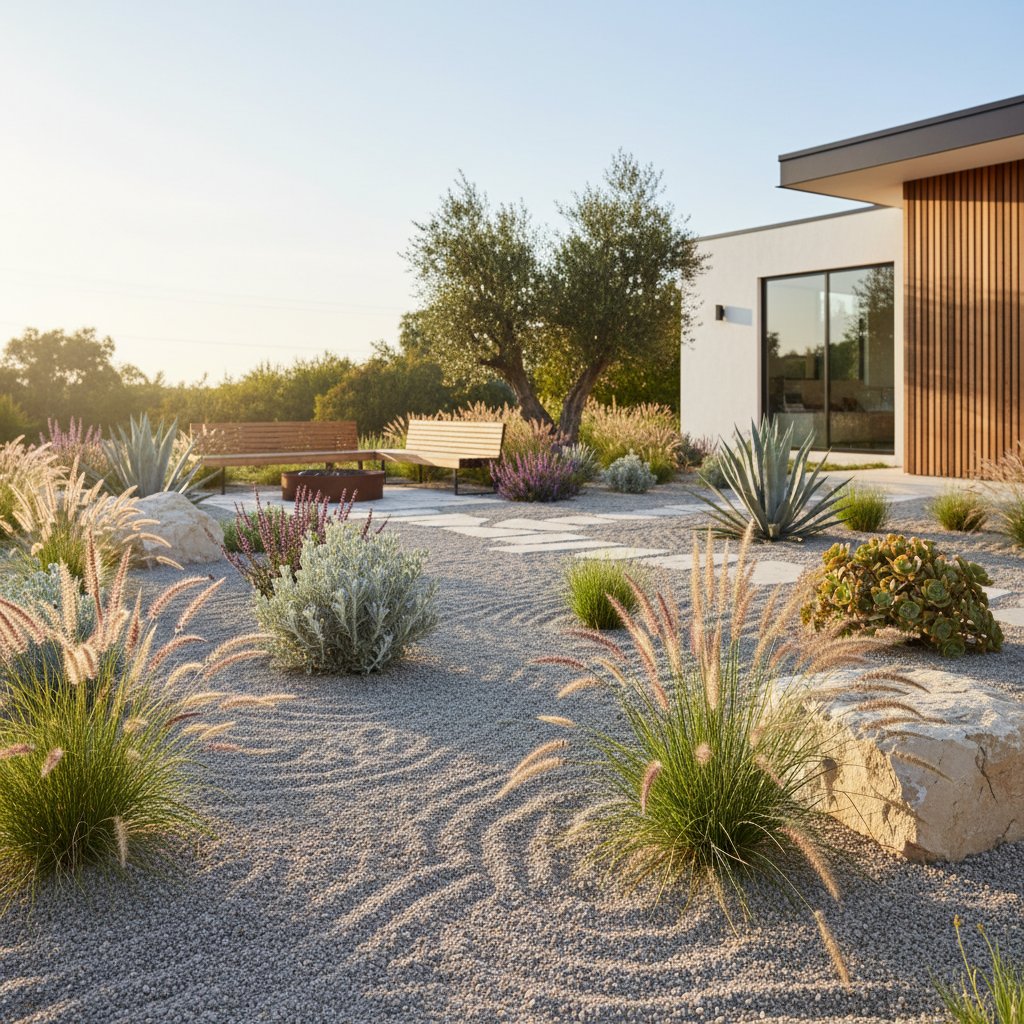Decomposed Granite: Transform Your Yard Affordably
A soft crunch underfoot on a garden path evokes natural simplicity. This sensation arises from decomposed granite, a material favored by homeowners seeking elegance without the high costs or complexity of concrete or stone pavers. Humble yet versatile, decomposed granite enables budget-conscious yard designs that integrate seamlessly with the environment.
What Decomposed Granite Entails
Decomposed granite, commonly abbreviated as DG, originates from weathered solid granite that fragments into small particles and fine gravel. The outcome yields an earthy, natural appearance that compacts into stable surfaces for patios, walkways, driveways, and paths. It appears in warm hues such as golden browns, soft grays, and reds, which harmonize with rustic or contemporary landscapes.
In contrast to crushed gravel with its sharp edges and uneven feel, decomposed granite offers a softer, more unified texture. Upon compaction, it produces a nearly smooth yet permeable surface that allows rainwater infiltration. This attribute positions it as an eco-conscious selection in regions prone to drainage challenges or runoff issues.
Reasons Homeowners Choose Decomposed Granite
Homeowners often navigate the tension between creative visions and practical constraints in outdoor planning. Aspirations for flagstone patios or patterned paver walkways frequently confront budget and labor realities. Decomposed granite serves as an equitable solution, delivering a polished, intentional aesthetic at a fraction of the expense.
Key advantages include:
- Cost savings: Decomposed granite expenses per square foot remain lower than those for stone or brick, covering both materials and labor.
- Simple installation: Property owners can manage placement independently with adequate site preparation.
- Organic aesthetic: Subtle color shifts and natural textures complement surrounding vegetation and terrain.
- Water permeability: Rainfall percolates through, minimizing pooling and soil erosion.
- Minimal upkeep: Periodic raking or replenishment suffices to maintain its condition.
These features render decomposed granite ideal for cohesive, inviting yards that prioritize comfort over perfection.
Decomposed Granite Versus Alternative Materials
Selecting a surfacing option benefits from direct comparisons to prevalent substitutes. Each material possesses unique merits, and recognizing distinctions aids in determining decomposed granite's optimal applications.
- Concrete: Provides a level, enduring base but incurs high costs and risks cracking with age. Decomposed granite proves more resilient and simpler to mend.
- Pavers: Yield structured patterns for formal designs. Decomposed granite imparts a gentler, organic vibe suited to casual or garden-inspired settings.
- Gravel: Presents initial economy yet displaces easily. Decomposed granite binds more securely, enduring moderate foot traffic.
- Mulch: Excels in planting areas but degrades rapidly for pathways. Decomposed granite endures longer while retaining form.
Concrete and pavers evoke solidity and longevity, whereas decomposed granite promotes flexibility and ease. It accommodates leisurely strolls, seating arrangements, and winding routes that enhance spontaneity.
Loose Versus Stabilized Decomposed Granite
Two primary variants of decomposed granite exist, with selection guided by intended function.
- Loose decomposed granite: This unaltered form spreads and compacts directly. It suits garden trails, interstices between stepping stones, or plant surrounds. Excellent drainage occurs, though minor shifting may happen on inclines over time.
- Stabilized decomposed granite: Incorporates a binding agent to secure particles post-compaction. The hardened result supports high-traffic zones like patios or driveways. Though pricier than loose, it undercuts pavers or concrete significantly.
Homeowners frequently initiate with loose decomposed granite in modest zones, advancing to stabilized for proven utility. Both permit straightforward renewal, fostering adaptability as landscapes develop.
Site Preparation and Installation Techniques
Decomposed granite installation demands preparation for durability and appeal. Outline the space and excise grass or weeds. Level and compact the subsoil, incorporating a one to two percent slope for water runoff. Lay weed-suppressing fabric beneath to curb intrusions and preserve cleanliness.
Apply decomposed granite in 2- to 3-inch layers, compacting each with a plate compactor or manual tamper. For stabilized types, adhere to producer guidelines on mixing ratios and 24- to 48-hour curing periods. The finished surface feels solid yet yields slightly, akin to a firm earth trail.
Define boundaries using metal edgings, stone curbs, or timber frames to match yard aesthetics. These elements not only refine visuals but also contain the material within designated bounds.
Maintenance Practices for Decomposed Granite
Decomposed granite requires little effort to sustain compared to rivals. Routine raking evens the surface and reallocates particles. Post-rainfall, address minor dips by refilling and recompacting.
Accumulated dust or debris may dull tones; a gentle water spray or broom sweep revives vibrancy. When thinning appears after years, integrate a matching topcoat layer, typically 1 inch thick, and compact anew.
Design Integration for Lasting Appeal
Decomposed granite harmonizes beauty and economy in landscape endeavors. It facilitates crafted outdoor realms free from fiscal strain typical of extensive hardscaping.
Hands-on application yields swift gratification, as spreading and firming reveal transformations. The material's grounded essence underscores that elegance emerges from restraint rather than excess.
Practical Implementation Steps
Commence modestly for yard enhancements. Install a decomposed granite trail linking planting zones or base a lounge spot with it. Observe its tactile response, plant synergy, and weather resilience over initial weeks.
Promote unity by repeating decomposed granite colors or textures across features. This approach binds diverse yard elements into a cohesive whole.
Decomposed granite transcends mere affordability; it embodies a sensible approach to exterior design. By selecting attuned materials, homeowners cultivate personalized, resilient spaces.



